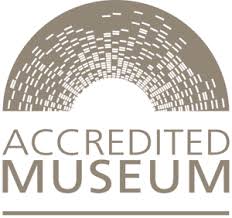Sculptor of monuments at the zenith of the British Empire – and Maidenhead resident – G E Wade’s work is still on display across the world and his portable pieces sell at auction for thousands of pounds. Now, vandalism and theft are threats to his legacy, but his statues were once so popular.


Images: Lyon & Turnbull
Wade established himself as a sculptor after his health collapsed in his late-20s. He had been an articled clerk training for the Bar but, though self-taught as an artist, he achieved early success with his bust of Ignacy Jan Paderewski in bronze. Paderewski was a Polish concert pianist who had achieved great fame in the United States – who, incidentally, later became Poland’s first post-independence prime minister in 1919 – and Wade was able to sell over 500 copies.
Maidenhead
Wade is recorded as living near Maidenhead – at Stubbings Farm – in the 1901 and 1911 censuses. He was married and had two daughters, and was doing well enough to afford several servants.

With one daughter – Elmira – in 1901, Wade employed Lucie Gallen from France as Governess. Eliza Trysdall, a 37-year-old widow, was their Cook, assisted by 21-year-old Housemaid Margaret Town. The family had 37-year-old widower Frank Holmes as Groom to look after the horses – useful when you’re an hour’s walk from Maidenhead.

By 1911, the Wades had two daughters – Delia is now 8 years old, Elmira 17 – and all the previous servants have moved on. Three new ones have joined the household; the cook was now Elizabeth Phillips. Alice Murray was the housemaid; she was married but was recorded as staying with the Wades on Census night. John Halden was a “Manservant”, which might have included the role of groom – or maybe some butlering when the Wades entertained. Maybe Delia went to the local school instead of having a governess.
Information about Wade’s earlier life is towards the end of this article.
Stubbings Farm is thought to be the same place as the Stubbings Manor shown on this 1911 map. The dovecote on the north-west corner is a listed building. View interactive map.
Wade’s workshop
Despite living in Maidenhead, Wade had his studio in Chelsea. He employed others and his London base would have been important for earning commissions.


Image: victorianweb 
Image: speel.me.uk
The Avenue, at 76 Fulham Road, was a collection of artists’ studios, originally the workshops and foundary of Baron Marochetti – who, with Edwin Landseer, produced the lions at the base of Nelson’s Column. After subdivision into units, Wade was recorded in trade directories as a tenant in 1902 and 1916-20. More about The Avenue.
Bronzes were often cast by the firm of J W Singer & Son’s of Frome. Such was the demand for statuary across the Empire, the company employed around 200 people, including 40 in the foundary. More about J W Singer.
Wade’s work

Queen Victoria, Colombo, Sri Lanka 
Cameron Highlander, Inverness 
Grenadier Guardsman 
Edward VII, Reading 
Truth
Image: victorianweb
Wade was not particularly innovative, and pieces were not always successful, but he maintained a lengthy career, still working in his late 70s. For more analysis of his artistic career, please read Jacqueline Banerjee’s article at Victorianweb
Wade today


John A MacDonald Monument, Montreal, Canada 
Controversy now sometimes focuses on Wade’s statues. The MacDonald Monument in Montreal, Quebec, was dedicated in 1895 to Canada’s first prime minister. Modern perspectives criticise MacDonald’s alleged racism towards First Nations and French-speakers – and the statue is often vandalised.
It’s a piece of metal. But statues still have symbolic power.

Victoria Embankment, London 
Portland, Maine
Image: portlandpublicart.org
Metal theft is also a recurring issue. Both copies of this beautiful piece – the Little Water Girl – are themselves replacements. They were commissioned in support of the Temperance Movement and first exhibited at the 1893 Chicago World Trade Fair. A short video is available here.
Before Maidenhead
George Wade’s father Nugent was a vicar in Chelsea, and George was tenth of 14 children. Some records suggest Nugent was born in Iceland, others Ireland – but he married in Denmark in 1836 so Iceland seems probable.


In 1881, George is living a well-to-do ecclesiastical lifestyle at 28 Soho Square, Chelsea with his parents, seven siblings and six servants – and working as an articled clerk.

By 1891, he has married, changed his career to Sculptor & Painter and moved to a nearby shared house at 8 Pont Street, Chelsea. The young couple have no children yet but still have two servants.
1891 is when his Paderewski bust was released. Wade can move up in the world.









